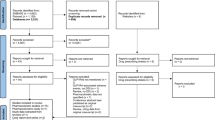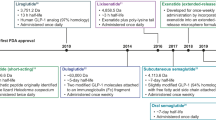Abstract
Background
This work aimed to design and optimize the gastro-retentive drug delivery system (GRDDS) by employing dual principles, i.e., floating and osmotic for pioglitazone hydrochloride (PGH). PGH is commonly prescribed for chronic type II diabetes mellitus (DM).
Method
Floating osmotic drug delivery system (FODDS)–based tablet was prepared to employ a 32-full factorial design to investigate the influence of HPMC-K4M and NaHCO3 on floating lag time and in vitro drug release. Furthermore, graphical optimization was carried out to get the optimal combination based on desirability. The excipients-drug interaction was performed by using DSC and FTIR studies.
Results
The optimized bath (OF-O) showed floating lag time (s) = 35.55 ± 2.5 and in vitro drug release (%) = 93.27 ± 2.2. The OF-O showed prolonged release of PGH over 8 h in 0.1 N HCl (pH 1.2). The in vivo estimation of buoyancy in human volunteers in fasted and fed conditions revealed that tablets stayed buoyant in gastric fluid for 8 h. The study concluded that the developed formulation could enhance gastric retention and provide prolonged delivery of PGH.
Conclusion
The implementation of dual principles further widens the scope of gastro-retentive drug delivery (GRDDS) for prolonging the drug release in the gastric cavity.







Similar content being viewed by others
Data Availability
All data generated or analyzed during this study are included in this article.
References
Khan MAB, Hashim MJ, King JK, Govender RD, Mustafa H, Al KJ. Epidemiology of type 2 diabetes – global burden of disease and forecasted trends. J Epidemiol Glob Health. 2019;10:107.
Alshora DH, Alsaif S, Ibrahim MA, Ezzeldin E, Almeanazel OT, Abou El Ela AES, et al. Co-stabilization of pioglitazone HCL nanoparticles prepared by planetary ball milling: in-vitro and in-vivo evaluation. Pharm Dev Technol. 2020;25:845–54.
Alam F, Islam MA, Mohamed M, Ahmad I, Kamal MA, Donnelly R, et al. Efficacy and safety of pioglitazone monotherapy in type 2 diabetes mellitus: a systematic review and meta-analysis of randomised controlled trials. Sci Rep. 2019;9:5389.
Christensen ML, Meibohm B, Capparelli EV, Velasquez-Mieyer P, Burghen GA, Tamborlane WV. Single- and multiple-dose pharmacokinetics of pioglitazone in adolescents with type 2 diabetes. J Clin Pharmacol. 2005;45:1137–44.
Rao BP, Baby B, Mathews R, Rajarajan S, Haritha P, Ramesh K, et al. Design, statistical optimisation, characterisation and pharmacodynamic studies on pioglitazone hydrochloride floating microparticles. J Microencapsul. 2014;31:406–14.
Eckland D, Danhof M. Clinical pharmacokinetics of pioglitazone. Exp Clin Endocrinol Diabetes. 2000;108:234–42.
Suresh S, Pai R, Pandit V, Devi K. In vitro-in vivo evaluation of fast-dissolving tablets containing solid dispersion of pioglitazone hydrochloride. J Adv Pharm Tech Res. 2012;3:160.
Naik JB, Ali SF, Muley DN. Effect of polymer concentration on the dissolution rates of pioglitazone hydrochloride. Polym-Plast Technol Eng. 2008;47:722–5.
Sanrame CN, Remenar JF, Blumberg LC, Waters J, Dean RL, Dong N, et al. Prodrugs of pioglitazone for extended-release (XR) injectable formulations. Mol Pharm. 2014;11:3617–23.
Alam S, Aslam M, Khan A, Imam SS, Aqil M, Sultana Y, et al. Nanostructured lipid carriers of pioglitazone for transdermal application: from experimental design to bioactivity detail. Drug Deliv. 2016;23:601–9.
Nair, Gupta, Al-Dhubiab, Jacob, Shinu, Shah, et al. Effective therapeutic delivery and bioavailability enhancement of pioglitazone using drug in adhesive transdermal patch. Pharmaceutics. 2019;11:359.
Sriram N, Katakam P. Formulation and evaluation of mucoadhesive microspheres of pioglitazone hydrochloride prepared by ionotropic external gelation technique. J Encapsulation Adsorpt Sci. 2016;06:22–34.
Asif HM, Rao TR, Anjum M. Design, development and in-vitro evaluation of intragastric buoyant tablets of Pioglitazone Hydrochloride. Int J Pharm Pharm Sci. 2014;6:91–6.
Tripathi J, Thapa P, Maharjan R, Jeong SH. Current state and future perspectives on gastroretentive drug delivery systems. Pharmaceutics. 2019;11:193.
Thapa P, Jeong S. Effects of formulation and process variables on gastroretentive floating tablets with a high-dose soluble drug and experimental design approach. Pharmaceutics. 2018;10:161.
Lopes CM, Bettencourt C, Rossi A, Buttini F, Barata P. Overview on gastroretentive drug delivery systems for improving drug bioavailability. Int J Pharm. 2016;510:144–58.
Kumar P, Singh S, Mishra B. Floating osmotic drug delivery system of ranitidine hydrochloride: development and evaluation–a technical note. AAPS PharmSciTech. 2008;9:480–5.
Verma RK, Mishra B, Garg S. Osmotically controlled oral drug delivery. Drug Dev Ind Pharm. 2000;26:695–708.
Derakhshandeh K, Berenji MG. Development and optimization of buspirone oral osmotic pump tablet. Res Pharm Sci. 2014;9:233–41.
Sugita M, Kataoka M, Sugihara M, Takeuchi S, Yamashita S. Effect of excipients on the particle size of precipitated pioglitazone in the gastrointestinal tract: impact on bioequivalence. AAPS J. 2014;16:1119–27.
Tanaka Y, Sugihara M, Kawakami A, Imai S, Itou T, Murase H, et al. In vivo analysis of supersaturation/precipitation/absorption behavior after oral administration of pioglitazone hydrochloride salt; determinant site of oral absorption. Eur J Pharm Sci. 2017;106:431–8.
Kumar P, Singh S, Mishra B. Gastroretentive drug delivery system of ranitidine hydrochloride based on osmotic technology: development and evaluation. Curr Drug Deliv. 2008;5:332–42.
Zhao Q, Gao B, Ma L, Lian J, Deng L, Chen J. Innovative intragastric ascaridole floating tablets: development, optimization, and in vitro–in vivo evaluation. Int J Pharm. 2015;496:432–9.
Naseem F, Shah SU, Rashid SA, Farid A, Almehmadi M, Alghamdi S. Metronidazole based floating bioadhesive drug delivery system for potential eradication of H. pylori: preparation and in vitro characterization. Polymers. 2022;14:1–23.
Dangre PV, Tattu AD, Borikar SP, Surana SJ, Chalikwar SS. Development and statistical optimization of alginate-Neusilin US2 micro-composite beads to elicit gastric stability and sustained action of hesperidin. Int J Biol Macromol. 2021;171:514–26.
Dangre P, Dudhkohar S, Chalikwar S. Development of Alginate- Neusilin US2 composite hydrogel beads for oral sustained release of cilnidipine : a statistical optimization Development of Alginate- Neusilin US2 (Magnesium alumino-metasilicate). Polym-Plast Tech Mat. 2020;59:169–83.
Chauhan MS, Kumar A, Pathak K. Osmotically regulated floating asymmetric membrane capsule for controlled site-specific delivery of ranitidine hydrochloride: optimization by central composite design. AAPS PharmSciTech. 2012;13:1492–501.
Banerjee A, Verma PRP, Gore S. Application of Box-Behnken design to optimize the osmotic drug delivery system of metoprolol succinate and its in vivo evaluation in beagle dogs. J Pharm Innov. 2016;11:120–33.
Dangre PV, Dusad PP, Singh AD, Surana SJ, Chaturvedi KK, Chalikwar SS. Fabrication of hesperidin self-micro-emulsifying nutraceutical delivery system embedded in sodium alginate beads to elicit gastric stability. Polym Bull. 2022;79:605–26.
Israr M, Pugliese N, Farid A, Ghazanfar S, Di Cerbo A, Muzammal M, et al. Preparation and characterization of controlled-release floating bilayer tablets of esomeprazole and clarithromycin. Molecules. 2022;27:3242.
Srivastava AK, Wadhwa S, Ridhurkar D, Mishra B. Oral sustained delivery of atenolol from floating matrix tablets - formulation and in vitro evaluation. Drug Dev Ind Pharm. 2005;31:367–74.
Rao GK, Mandapalli PK, Manthri R, Reddy VP. Development and in vivo evaluation of gastroretentive delivery systems for cefuroxime axetil. Saudi Pharm J. 2013;21:53–9.
Teaima M, Abdel Hamid MM, Shoman NA, Jasti BR, El-Nabarawi MA. Promising swellable floating bupropion tablets: formulation, in vitro/in vivo evaluation and comparative pharmacokinetic study in human volunteers. Drug Des Dev Ther. 2020;14:2741–57.
Dangre PV, Gurram NJ, Surana SJ, Chalikwar SS. Development and optimization of vitamin D3 solid self-microemulsifying drug delivery system: investigation of flowability and shelf life. AAPS PharmSciTech. 2022;23:110.
Gambhire MN, Ambade KW, Kurmi SD, Kadam VJ, Jadhav KR. Development and in vitro evaluation of an oral floating matrix tablet formulation of diltiazem hydrochloride. AAPS PharmSciTech. 2007;8:E166–74.
Tadros MI. Controlled-release effervescent floating matrix tablets of ciprofloxacin hydrochloride: development, optimization and in vitro–in vivo evaluation in healthy human volunteers. Eur J Pharm Biopharm. 2010;74:332–9.
Membranes CA, Concha L, Luiza A, Pires R, Moraes AM, Mas-hernández E, et al. Cost function analysis applied to different kinetic release models of Arrabidaea chica Verlot extract from. Polymers. 2022;14:1109.
Bhosale UM, Galgatte UC, Chaudhari PD. Development of pioglitazone hydrochloride lipospheres by melt dispersion technique : optimization and evaluation. J App Pharm Sci. 2016;6:107–17.
Teaima M, Hababeh S, Khanfar M, Alanazi F, Alshora D, El-Nabrawi M. Design and optimization of pioglitazone hydrochloride self-nanoemulsifying drug delivery system (SNEDDS) incorporated into an orally disintegrating tablet. Pharmaceutics. 2022;14:1–23.
Acknowledgements
The author sincerely acknowledges radiologist Dr. Nilay S. Nimbarkar for his help in carrying out the X-ray study.
Author information
Authors and Affiliations
Contributions
Pankaj Dangre: conceptualization, software, validation, formal analysis, writing—reviewing and editing, project administration. Navnath Undre: methodology, formal analysis, data creation. Satish Meshram: formal analysis. Dilip Madia: supervision, resources: Mangesh Godbole: reviewing of original draft preparation, visualization, investigation, project administration.
Corresponding authors
Ethics declarations
Ethics Approval
The protocol complies with the Helsinki and Tokyo declarations for humans.
Competing Interests
The authors declare no competing interests.
Additional information
Publisher's Note
Springer Nature remains neutral with regard to jurisdictional claims in published maps and institutional affiliations.
Rights and permissions
Springer Nature or its licensor (e.g. a society or other partner) holds exclusive rights to this article under a publishing agreement with the author(s) or other rightsholder(s); author self-archiving of the accepted manuscript version of this article is solely governed by the terms of such publishing agreement and applicable law.
About this article
Cite this article
Dangre, P., Gundre, N., Meshram, S. et al. Design of Dual Principles Floating Osmotic Drug Delivery System of Pioglitazone Hydrochloride for Gastro-retention: In Vitro-In Vivo Evaluation. J Pharm Innov 18, 2131–2144 (2023). https://doi.org/10.1007/s12247-023-09779-6
Accepted:
Published:
Issue Date:
DOI: https://doi.org/10.1007/s12247-023-09779-6




